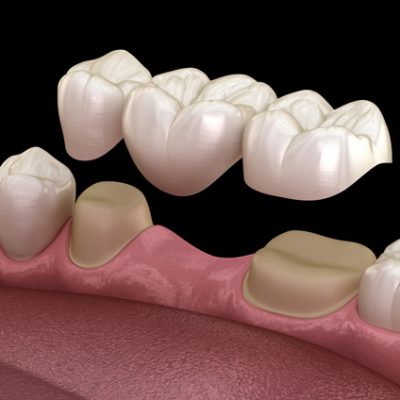
What Are Dental Bridges and When Are They Required?
How dental bridges can help you regain confidence
Missing teeth cause a gap in your grin and may make it difficult to chew food and communicate effectively. An option may be a dental bridge if you are missing one to four teeth in a row. Bridges are more comfortable than partial dentures and less expensive than dental implants.
What are Dental Bridges?
A dental bridge fills the space left by one or more lost teeth between two healthy teeth. Healthy teeth on either side of the gap are given dental crowns to support the bridge between them. These teeth are referred to as abutment teeth or anchor teeth. The pontic, which the bridge ultimately makes, is an artificial tooth. The pontic may be made of various materials, including gold, alloys, porcelain, or a combination.
Types of Dental Bridges
Traditional:
A traditional dental bridge consists of dental crowns bonded to each abutment tooth, which hold the fake tooth or teeth in place. The most common type of dental bridge is a conventional bridge, which can be used when we still have healthy teeth on either side of the gap left by our lost tooth.
Cantilever dental bridge
Cantilever dental bridges are similar to typical bridges in that only one abutment tooth serves as the anchor for the pontic, which is secured in place by a dental crown. One healthy tooth is needed next to the gap left by the lost tooth to support a cantilever bridge.
Maryland dental bridge
Dental bridges need two healthy abutment teeth—one on either side of the gap—just like a conventional bridge does. A Maryland bridge, on the other hand, employs a metal or porcelain framework bonded onto the backs of the abutment teeth. In contrast, a traditional bridge puts dental crowns on the abutment teeth.
Like a traditional bridge, a Maryland bridge is only an option if there is a natural tooth on either side of the gap left by the lost tooth or teeth.
Implant-supported dental bridge
Dental implants are used to support bridges rather than frameworks or crowns. An implant is often surgically implanted for every lost tooth, and this implant holds the bridge in place. If placing one implant for each lost tooth is impossible, the bridge may consist of a pontic hanging between two implant-supported crowns.
Why Are Dental Bridges Required?
A dental bridge often replaces one to three consecutive teeth. In extreme circumstances, a bridge can take the position of up to four teeth in a row. However, bear in mind that longer bridges typically need more support. Therefore, healthy natural teeth are required on both sides of the gap to replace four lost teeth with a bridge.
A lost tooth or teeth can have various effects, but a dental bridge can make those adjustments.
They can help the person feel more confident by improving the shape of their face and the appearance of their grin. It aids in maintaining the stability of the neighbouring teeth and prevents them from shifting to close the space left by the missing tooth in the jaw.
Additionally, they can enhance jaw functionality and help with regular chewing and speech, as they did before the tooth was gone. Additionally, the bridge might assist in redistributing the forces in the patient’s altered bite brought on by the missing teeth.




